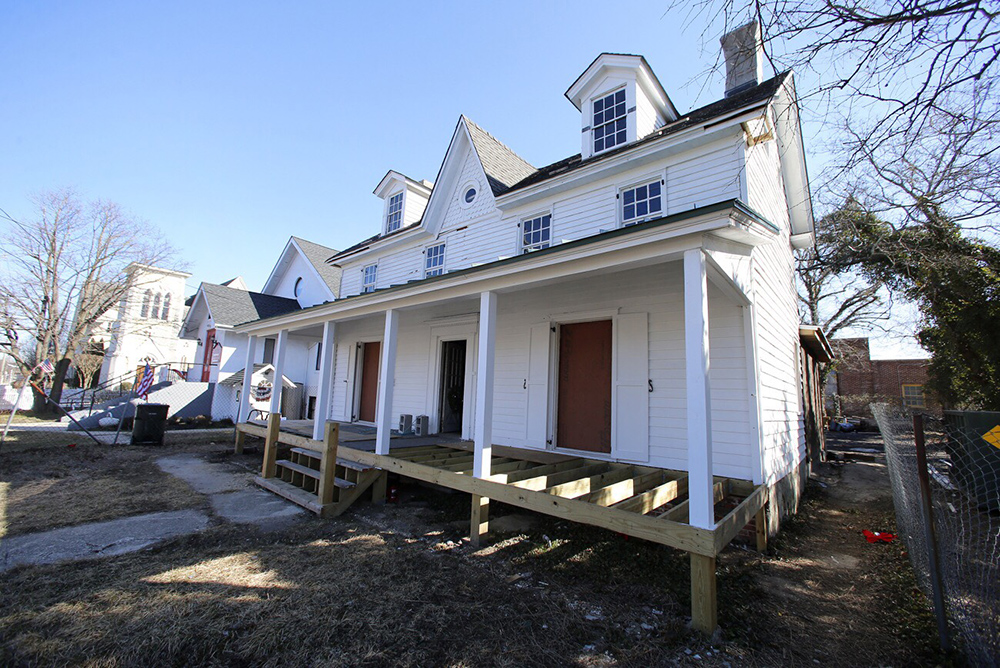By Tammy Thornton

Perhaps you know a little about the heroic acts of abolitionist and suffragist Harriet Tubman and her bravery and determination through her involvement in the Underground Railroad. But did you know that Harriet Tubman and the Underground Railroad have a connection to our own South Jersey?
After Harriet Tubman escaped the horrors of slavery from Maryland in 1849, she made approximately 13 missions to free others who were enslaved. She worked under an alias as a domestic and cook in Cape May in the summer of 1852 to raise money for conducting others to freedom through the Underground Railroad. That fall, she led nine people out of slavery.
She battled physical and emotional hardships her entire life, yet never stopped working for the freedom of others.
Soon South Jersey will honor the life and contributions of Tubman with the Harriet Tubman Museum in Cape May. Scheduled to open June 19, 2020, the date was chosen to coincide with Juneteenth, also known as Freedom Day. Smithsonian Magazine named the museum one of “The Most Anticipated Museums of 2020.”

One of Cape May’s oldest houses will be the home for the new museum. Built in the early 19th century, the historic Howell House, located on Lafayette Street, was purchased by the adjacent Macedonia Baptist Church around 1909 and served for over 70 years as a parish for the church. In legislation declaring the Howell House to become the Harriet Tubman Museum, it was stated: “plans for the museum indicate that it will showcase Harriet Tubman’s role as a champion of civil rights and the time she spent in Cape May in the 1850’s earning income to support her efforts in the Underground Railroad”. Lynda Anderson-Towns, Macedonia Baptist Church Liaison and Harriet Tubman Museum Trustee stated, “Harriet Tubman’s story is a story shared by many servants and domestics who worked in Cape May and helped in the Underground Railroad.”

The museum will also remember and bring to life some of the lost African-American history of Cape May that followed in the decades after Harriet Tubman’s time and well into the 1960’s, when the neighborhood surrounding the Howell House was a core of African-American society in Cape May. Approximately 65 businesses were owned by African-Americans, who made up 30% of the population of Cape May.

Among the exhibits in the museum will be maps showing where Africans were kidnapped from and where they went during the slave trade. The Africa Room will be dedicated to the massive collection of artifacts compiled by Reverend Robert Davis, pastor of the Macedonia Baptist Church for 47 years, from the early 1960’s to 2015. He collected artifacts from tribes in Africa and used these displays to teach Black History Classes both in the Howell House as well as through traveling exhibits.

The largest room, The Grand Gallery, will include artifacts from slavery and the Civil War, during which Tubman served as an armed scout and spy for the Union Army. The gallery will also contain an 1879 edition of William Still’s book The Underground Railroad, an extensive narrative detailing the “Hardships, Hair-breadth Escapes and Death Struggles of the Slaves in their Effort to Freedom”. Often called the “Father of the Underground Railroad”, Still is believed to have rescued nearly 800 slaves through his work on the Underground Railroad.
Across the street from the future Harriet Tubman Museum of Cape May is another historic home, the Stephen Smith House, built in 1846 as a summer home for Stephen Smith of Philadelphia. Smith, who was born into slavery, purchased his own freedom and by the 1840’s and 50’s became a successful businessman. He was known as one of the wealthiest black businessmen in America. He and his partner William Whipper owned a lucrative lumber and coal business. Smith used his wealth to fund schools, libraries, and churches for African-Americans. He was also an active abolitionist that helped in the Underground Railroad. Though the Underground Railroad was not a literal railroad, but rather a network of secret routes and safe houses to help freedom-seekers, Smith eventually owned actual railroad cars, and had a secret compartment built into them to hide runaway slaves on their way to freedom.

Shore Local looks forward to this revival of the history of the African-American community and rich culture in South Jersey, as well as a reminder of the horrors of slavery, and the acts of bravery of so many that fought against it.
This kicks off a new feature of Shore Local, “Homes with History”. If you know of a home with historical significance, please share with us by writing to: shorelocalgardener@gmail.com





